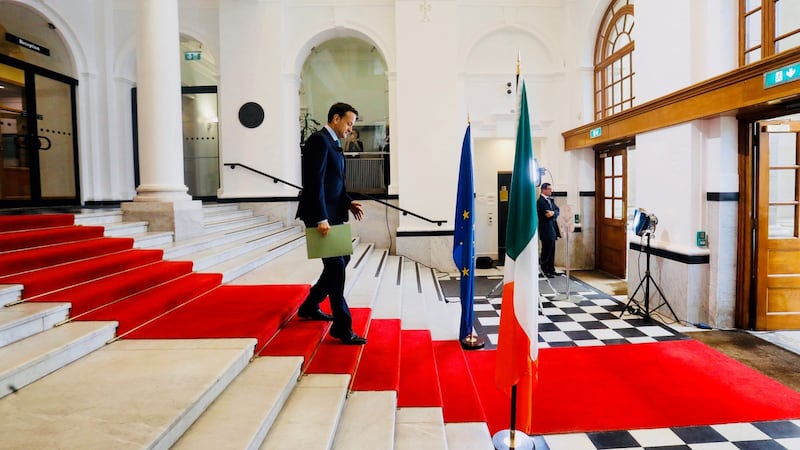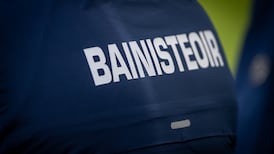It may have been intended to create an upbeat national mood as the lockdown heads into a new phase but Leo Varadkar’s appearance on Friday’s Late Late Show couldn’t have greatly reassured the GAA community. Worse, it ran the risk of causing the sort of dejection that sinks in when reassurances are worryingly empty.
The difference between the Government’s perspective on lifting sports restrictions and that of NPHET (the National Public Health Emergency Team) is laid bare on these pages by NPHET member and virologist Dr Cillian de Gascún.
So it’s one thing for the Taoiseach to say that there could be an All-Ireland this year as part of an envisaged lifting of restrictions and quite another for this to be deemed advisable by health authorities.
The unease at any imminent return of team sports and Gaelic games in particular was actually obvious on the same broadcast on Friday when various well-known names from the GAA world came on to talk about the extraordinary fund raising #DoItForDan - in aid of the young child of former Laois players, Aisling and Niall Donoher.
Aidan O’Shea was among them and as the only current inter-county player his response was telling. Having acknowledged the desire for sport to return - and absorbed Ryan Tubridy’s clumsy jibe about Mayo’s serial disappointments - he said, “there’s bigger things at stake at the moment”.
He was then asked whether his preference would be to forget about the 2020 championship and hit the reset button for next year.
“It wouldn’t be my preference. I’m desperate to get back playing football. It’s very hard at the moment not having a focus in terms of our training and I’d love if we could have a championship in 2020 but I think we need to be realistic and take the experts’ advice over the next number of weeks.”

The key concern in any safe return for Gaelic games or any other competitive recreation is the phrase ‘social distancing’. It’s mentioned in all five phases of the Government plan.
“Obviously that’s a matter for the GAA,” said Varadkar on Friday when declaring that the All-Irelands could still take place. “Not with spectators but it could be done. I think it’s possible. You’d be talking August and September. It would be a later calendar than we’re used to.”
The Government plan appears to regard spectators as the only threat or vulnerability.
It proposes that on 20th July (phase four), it is proposed that “sports team leagues (eg soccer and GAA)” be permitted, “but only where limitations are placed on the numbers of spectators and where social distancing can be maintained.”
Then on 10th August (phase 5) “close physical contact sports (rugby, boxing, wrestling)” are to be permitted along with “sports spectatorship,” but “only in accordance with both indoor and outdoor numbers restrictions and where social distancing can be complied with.”
Spectators are prohibited or restricted because of the need for social distancing. How can the advice to maintain a two-metre gap between people be compatible with playing field sports? In that context what on earth is the relevance of a distinction between ‘partial contact’ and ‘close physical contact’ sports?
Professional solutions such as cocooning and constant testing are of little relevance to Gaelic games.
It is clear that the GAA had little input into these projections. In fact it’s a matter of public record that the association’s opinions were effectively ignored, given its president John Horan’s interview on RTE radio with Seán O’Rourke last week.
He was commenting on proposals similar to those published on Friday that had been leaked from the Department of Sport about a potential return to training of inter-county panels, backed by extensive testing.
“Our players are amateur athletes and they go back to their families and work place and we can’t put them or anyone they come into contact with, at risk just for the sake of playing games. We won’t be making any rushed decision on this.
“We’ve always taken our guidance from the health authorities and we’ll continue to do that and until they declare that contact sport is safe we won’t be playing games. If and when we do return, the club scene will be our priority because 98 per cent of our activity happens at club level and that includes our inter-county.”
In Dr De Gascún’s Saturday interview, he was conflicted between the hard facts and an acknowledgement that there is a strong desire for team sports to return.
“I don’t see it being something we could recommend from a public health perspective without social distancing,” he said, “and assuming we are not going to have an anti-viral therapy or a vaccine for 12 to 18 months, it is difficult to recommend.
“I think team sports are going to be in a very difficult position.”
The best reassurance on offer wasn’t that encouraging, either.
“Team sports behind closed doors is probably the first step. At some point we have to take some calculated risks because we all know we can’t stay in our current situation forever.”
How willing is the GAA with its amateur sports and even elite players hard-wired into their communities going to be to take ‘calculated risks’ with the health of players, their families and social circles?
We’ll find out this week but I think we all know the answer.











